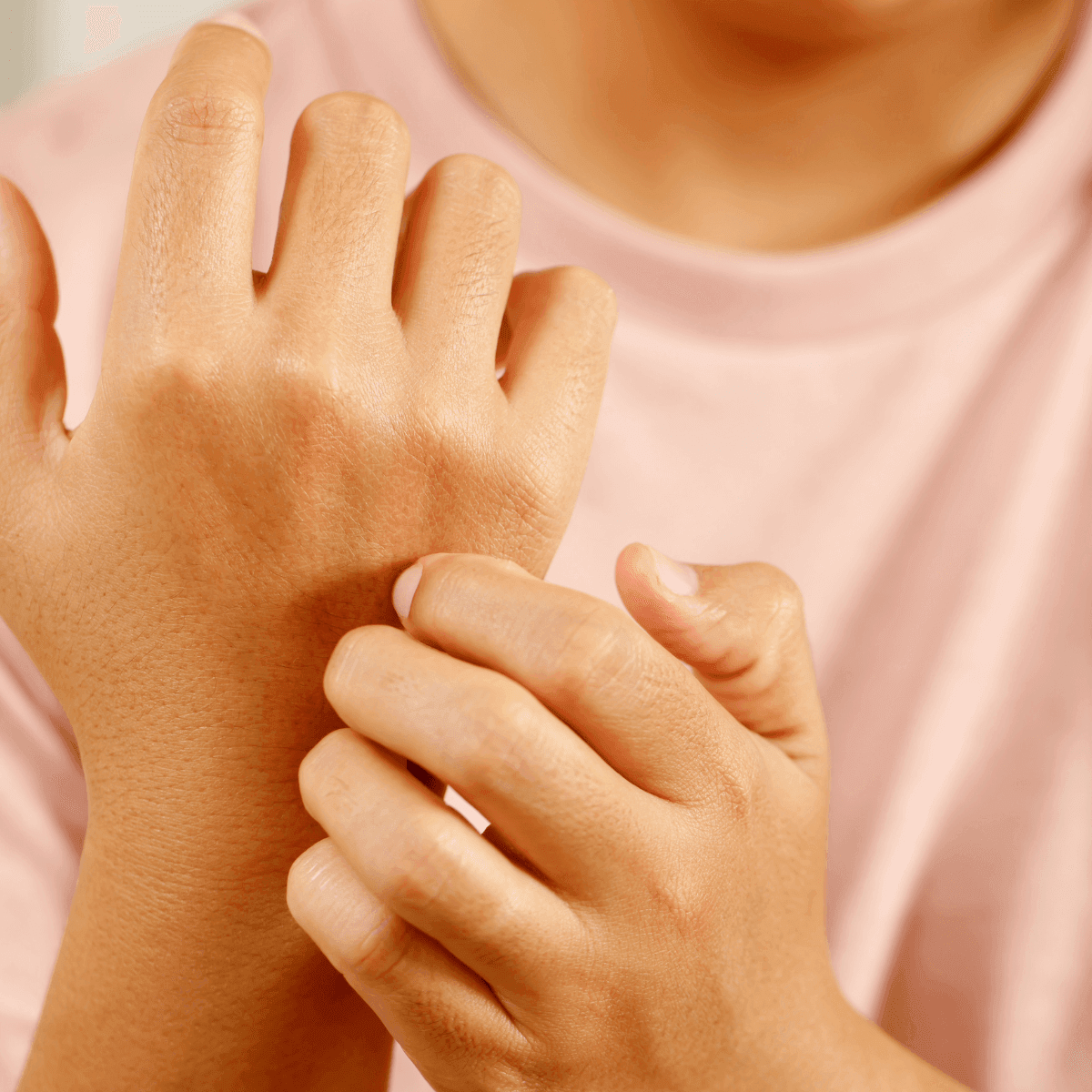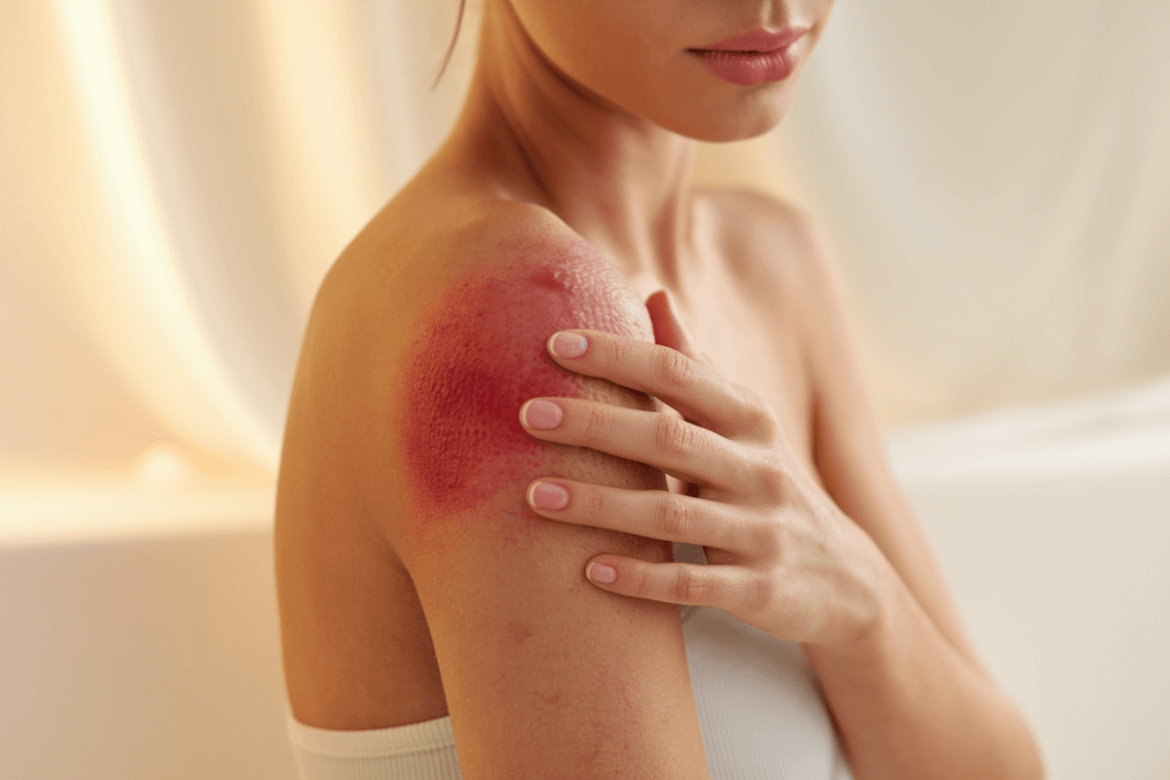Have you ever applied a new moisturizer, only to wake up with red, itchy skin? Or maybe you wore a stunning pair of earrings, but by the end of the day, your earlobes were angrily inflamed? Welcome to the not-so-glamorous world of contact dermatitis, where your skin’s reaction to certain products or materials can throw your beauty routine into chaos.
In this article, we’ll dive into what contact dermatitis is, what triggers it, and how you can recognize, treat, and prevent those annoying allergic reactions. Say goodbye to unwanted rashes and hello to happier, healthier skin!
Contents
What is Contact Dermatitis?
Contact dermatitis is a type of inflammation caused when your skin comes into contact with an irritant or allergen. But don’t worry – this isn’t contagious or life-threatening. Instead, it’s a loud reminder to rethink what you’re putting on your body.
There are two main types of contact dermatitis:
- Irritant Contact Dermatitis: This is the more common type and happens when something physically damages your skin barrier. Think of harsh cleaning products, over-exfoliation, or even prolonged exposure to water.
- Allergic Contact Dermatitis: Here’s where your immune system gets involved. If your body decides it doesn’t like a specific ingredient, it mounts a reaction, resulting in itching, redness, and sometimes blisters.

Common Triggers of Contact Dermatitis
So, what’s causing all this drama? Triggers for contact dermatitis are everywhere, from your makeup bag to your laundry room. Let’s break it down:
- Skincare Products: That luxurious scented lotion you love? It might be loaded with fragrances or preservatives that irritate sensitive skin. Even seemingly natural ingredients like essential oils can cause problems.
- Makeup: Bold lipsticks, vibrant eyeshadows, and even some sunscreens contain allergens like nickel or synthetic dyes. The prettier the palette, the trickier it might be for your skin.
- Everyday Items: Jewelry is a common culprit, especially if it contains nickel. Detergents, latex gloves, and even plants like poison ivy are notorious for triggering reactions.
- Environmental Factors: Sometimes, it’s not the product itself but how it reacts to the environment. For instance, certain creams can make your skin hypersensitive to sunlight.
The key takeaway? It’s not always the obvious culprit. Even the most innocent-seeming products can be hiding a skin saboteur.
How to Identify Allergic Reactions
Recognizing an allergic reaction isn’t always straightforward, especially when symptoms can mimic other skin issues. Here’s how to pinpoint it:
- Timing is Everything: Allergic reactions don’t always appear instantly. Sometimes, it can take a day or two for your skin to flare up after exposure to an allergen.
- Location Clues: Where did the reaction happen? If it’s your wrists, consider bracelets or watches. Around your eyes? It could be your mascara or eyeliner.
- Symptom Check: Look out for redness, itching, swelling, or blister-like bumps. If your skin feels like it’s throwing a tantrum, it might be time to investigate.
- When to Worry: If you notice severe swelling, widespread rash, or difficulty breathing, it’s no longer a minor issue. Seek medical attention right away.
How to Pinpoint Triggers
Finding the exact cause of contact dermatitis can feel like solving a mystery. Here’s your step-by-step guide to becoming a skin detective:
- Patch Testing: Dermatologists can perform a patch test to identify specific allergens. This involves applying small amounts of potential irritants to your skin and monitoring for a reaction.
- Keep a Skin Diary: Document every new product you try, noting when you start and any changes you observe. This can help you connect the dots between products and flare-ups.
- Simplify Your Routine: If you’re dealing with a reaction, strip your skincare routine down to the basics. Introduce new products one at a time to see how your skin responds.
Treatment Options
So, you’ve identified the issue – now what? The good news is that most cases of contact dermatitis can be managed with a little TLC.
- Over-the-Counter Solutions: Hydrocortisone cream is a lifesaver for reducing inflammation and itching. Antihistamines can also help with allergic reactions. For soothing relief, consider calamine lotion or an oatmeal-based moisturizer.
- Dermatologist’s Touch: If your reaction is persistent or severe, it’s time to call in the pros. A dermatologist can prescribe stronger treatments, like topical steroids, or guide you through allergen testing.
- Home Remedies: Natural remedies like aloe vera or cold compresses can help calm irritated skin. Avoid scratching, as it can worsen the inflammation or lead to infection.

Prevention Tips
Prevention is always better than cure, and when it comes to contact dermatitis, a few small changes can make a big difference:
- Choose Smart Products: Look for labels like “fragrance-free” and “hypoallergenic.” Avoid anything with a long list of hard-to-pronounce chemicals.
- Do a Patch Test: Never skip this step, especially with products that stay on your skin for long periods, like moisturizers or makeup.
- Protect Your Skin: Wear gloves when handling cleaning products or gardening. For jewelry, opt for hypoallergenic materials like titanium or surgical steel.
- Avoid Known Triggers: Once you’ve identified what causes your reactions, steer clear of those ingredients or materials.
Importance of Professional Advice
While home remedies and careful product choices can help, there’s no substitute for professional advice. A dermatologist can provide targeted solutions, whether it’s advanced patch testing, prescription treatments, or simply guidance on building a skin-friendly routine.
If your reactions are frequent or severe, don’t hesitate to seek expert help. They can help you uncover hidden triggers and get your skin back to its glowing best.
Contact dermatitis might be a pesky skin condition, but it doesn’t have to control your life – or your beauty routine. By understanding what it is, recognizing the triggers, and taking proactive steps, you can keep your skin calm, clear, and happy.
Remember, your skin is unique, and what works for someone else might not work for you. Listen to your body, invest in high-quality products, and don’t shy away from professional advice when needed. Your skin will thank you!


